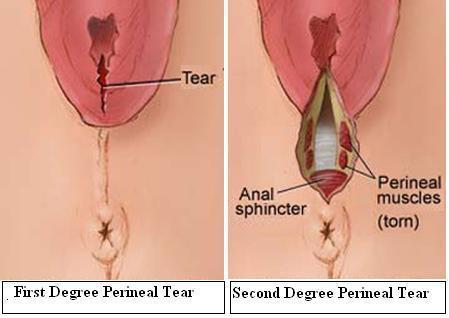
10. Cronin, R & Maude, R 2010, To suture or not to suture second degree lacerations: what informs this decision?’ MIDIRS Midwifery Digest, vol. 20, no. 1, pp. 69-81.
11. Dahlen, H & Homer, C 2008, ‘Perineal trauma and postpartum perineal morbidity in Asian and Non-Asian primiparous women giving birth in Australia’, JOGNN , vol. 37, pp. 455-463.
12. Dahlen, H, Homer, C & Leap N 2011, ‘From social to surgical: historical perspectives on perineal care during labour and birth’, Women and Birth , vol. 24, pp. 105-111.
13. Dahlen, H, Homer, C, Cooke, M & Upton, A 2009, ”Soothing the ring of fire’: Australian women’s and midwives’ experiences of using perineal warm packs in the second stage of labour’, Midwifery, vol. 25, pp. e39-e48.
14. Dahlen, H, Ryan, M, Homer, CSE & Cooke, M 2007, ‘An Australian prospective cohort study of risk factors for severe perineal trauma during childbirth’, Midwifery , vol. 23, pp. 196-203.
15. Elharmeel, SMA, Chaudhary, Y, Tan, S, Scheermeyer, E, Hanafy, A & van Driel ML 2011, ‘Surgical repair of spontaneous perineal tears that occur during childbirth versus no intervention’, Cochrane Database of Systematic Reviews 2011, Issue 8. Art. No.: CD008534. DOI: 10.1002/14651858.CD008534.pub2.
16. Goldberg, J, Hyslop, T, Tolosa, JE & Sultana, C 2003, ‘Racial differences in severe perineal lacerations after vaginal delivery’, American Journal of Obstetrics and Gynecology , vol.188, pp. 1063-7.
17. Groutz, A, Cohen, A, Gold, R, Hasson, J, Wengier, A, Lessing JB & Gordon, D 2011 ‘Risk factors for severe perineal injury during childbirth: a case-controlled study of 60 consecutive cases’,Colorectal Disease , vol.13, no.8, pp. e216-219.
18. Hastings-Tolsma, M, Vincent, D, Emeis, C & Francisco, T 2007, ‘Getting through birth in one piece: protecting the perineum’, American Journal of Maternal Child Nursing , vol. 32, no. 3, pp. 158-64.
19. Helain et al. 2011, ‘Characteristics associated with severe perineal and cervical lacerations during vaginal delivery’, Obstetrics and Gynecology , vol. 117, no. 3, pp. 627-635.
20. Hillebrenner, J, Wagenpfeil, S, Schuchardt, R, Schelling, M & Schneider, T 2000, ‘First clinical experiences with the new birth trainer Epi-no® in primiparous women’, Z Geburtsh Neonatol, vol.204, pp. 18.
21. Kovacs, G, Heath, P, Heather, C 2004 ‘First Australian trial of the birth-training device Epi-No: a highly significantly increased chance of an intact perineum’, The Australian & New Zealand Journal of Obstetrics & Gynaecology, vol. 44, pp. 347 348.
22. Lindgren, HE, Brink, A & Klinberg-Allvin, M 2011, ‘Fear causes tears perineal injuries in home birth settings. A Swedish interview study, BMC Pregnancy and Childbirth , vol. 11, no. 6:http://www.biomedcentral.com/1471-2393/11/6
23. Lydon-Rochelle, M, Albers, L & Teaf, D 1995, ‘Perineal outcomes and nurse-midwifery management’,Journal of Nurse Midwifery , vol. 40, no. 1, pp. 13-8.
24. Mayerhofer, K, Bodner-Adler, B, Bodner, K, Rabl, M, Kaider, A, Wagenbichler, P, Journa, EA & Husslein, P 2002, ‘Traditional care of the perineum during birth: A prospective, randomized, multicenter study of 1076 women’, Journal of Reproductive Medicine, vol.47, no. 6, pp. 477-82.
25. Murphy, PA & Feinland, JB 1998, ‘Perineal outcomes in a home birth setting’, Birth , vol.25, no.4, pp. 226-34.
26. Nodine, P & Roberts, J 1987, ‘Factors associated with perineal outcome during childbirth’,Journal of Nurse Midwifery , vol. 32, pp. 123-30.
27. Sampselle, CM & Hines, S 1999, ‘Spontaneous pushing during birth: relationship to perineal outcomes’, Journal of Nurse-Midwifery , vol. 44, no. 1, pp. 36-9.
28. Schaffer, JI, Bloom, SL, Casey, BM, McIntire, DD, Nihira, MA & Leveno, KJ 2005a, ‘A randomized trial of the effects of coached vs uncoached maternal pushing during the second stage of labour on postpartum pelvic floor structure and function’, American Journal of Obstetrics and Gynecology , vol. 192, pp. 1692-6
29. Shorten, A, Donsante, J & Shorten, B 2002, ‘Birth position, accoucheur, and perineal outcome: informing women about choices for vaginal birth’, Birth , vol. 29, no. 1, pp. 18-27.
30. Shorten, A, Donsante, J & Shorten, B 2002, ‘Birth position, accoucheur, and perineal outcome: informing women about choices for vaginal birth’, Birth , vol. 29, no. 1, pp. 18-27.
31. Soong, B & Barnes, M 2005, ‘Maternal position at midwife-attended birth and perineal trauma: is there an association’,Birth , vol.32, no. 3, pp. 164-9.
32. Soong, B, Jacobs, J & Barnes, M 2001, ‘Reducing perineal trauma: a study of midwives’ practices at the time of birth’,Birth Issues, vol.10, no. 1, pp. 5-12.


